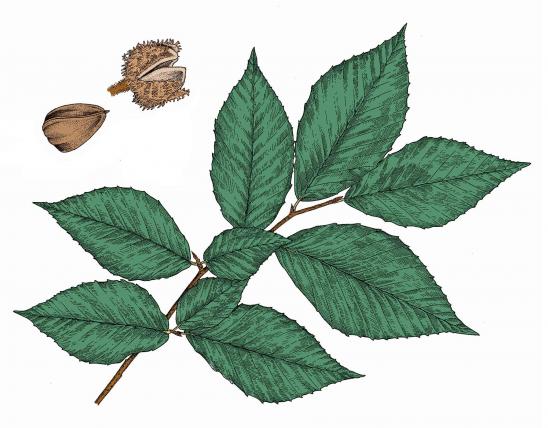
Dwarf chestnut oak is a shrub or small tree, usually growing in multistemmed clumps or thickets.
Leaves are alternate, simple, leathery, 1½–4 inches long; margin wavy, widely toothed, with 4–8 teeth per side, a vein running to each tooth; upper surface green, shiny, smooth; lower surface much paler, velvety-hairy; turning red in autumn.
Bark is brownish-gray, smooth, with horizontal pores; developing into flat, scaly, checkered ridges with shallow furrows.
Twigs are reddish-brown and hairy, becoming gray and smooth.
Flowers April–May, in catkins.
Fruits September–October, acorns about ½ to ¾ inch long, egg-shaped, dark reddish-brown; cap enclosing a third of the acorn, grayish-brown, scales small, warty, densely hairy; nut sweet, edible, maturing the first season.
Similar species: Leaves are similar to those of chinkapin oak, but dwarf chestnut oak's are smaller (less than 4 inches long), with usually no more than 8 teeth per side and usually blunter teeth.
Height: to 15 feet, but usually only 3–10 feet.

Usually found in prairies and open areas of north Missouri; can be planted statewide.
Habitat and Conservation
Occurs in dry soils in open woods, on glades, on prairies, along bluffs, and in thickets. This species can sometimes be difficult to manage in prairies, having a tendency to form thickets. Periodic burning (a natural process) or haying helps to keep it and other woody plants from dominating prairies.
Human Connections
The dwarf nature of this oak makes it an interesting planting for borders.
Ecosystem Connections
The acorns are eaten by several birds and mammals. Any shrub that forms thickets can provide home — or merely needed shelter — for a wide variety of animals.
































